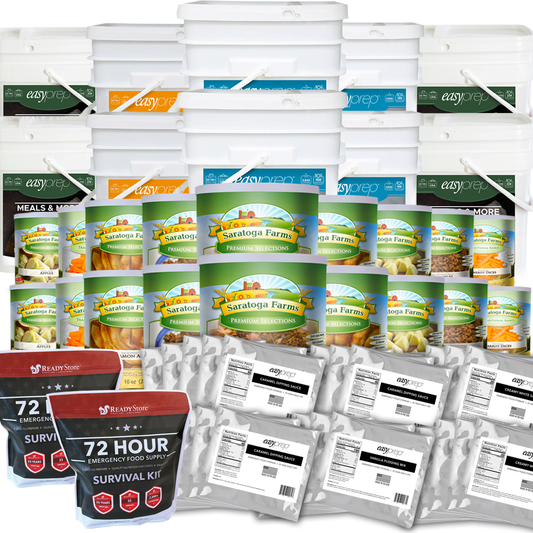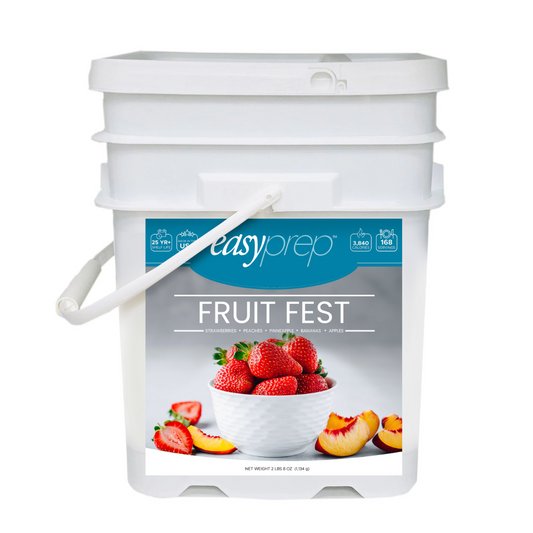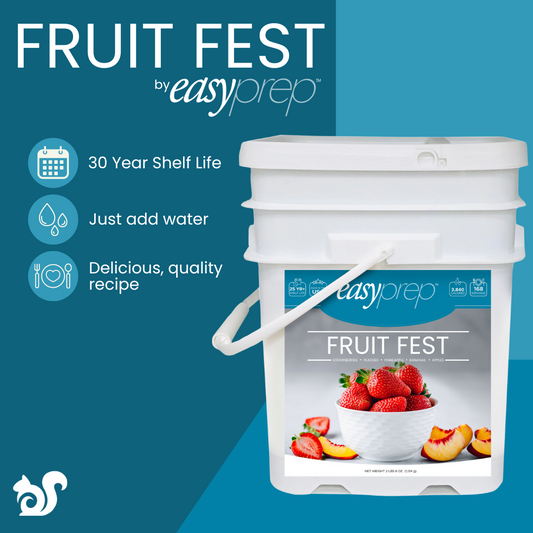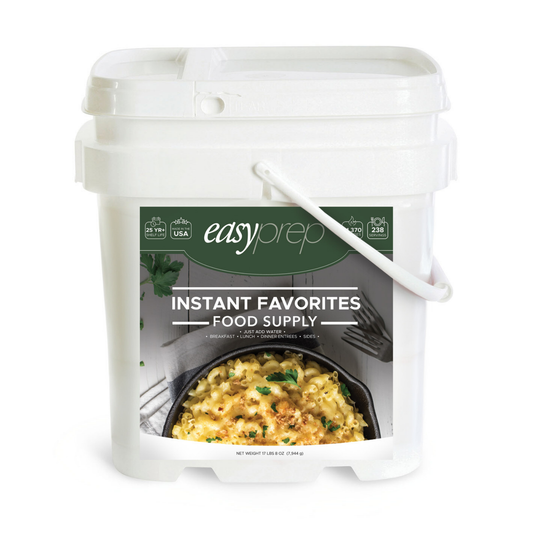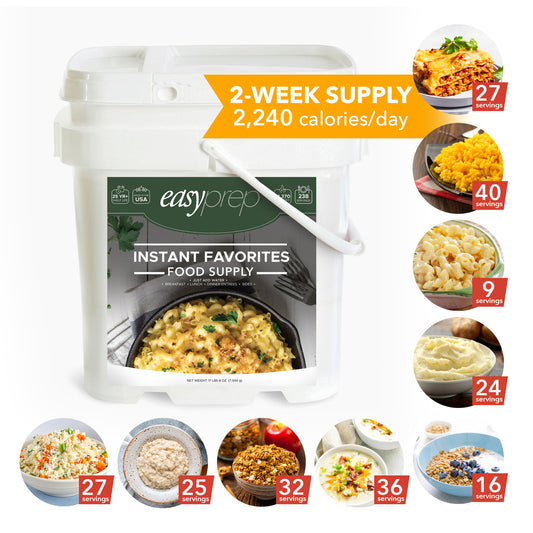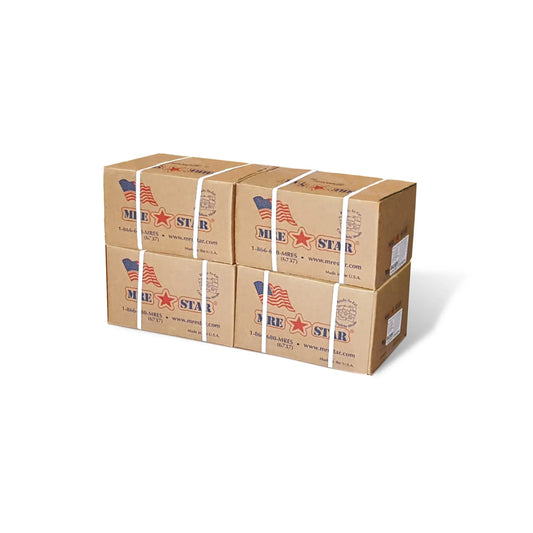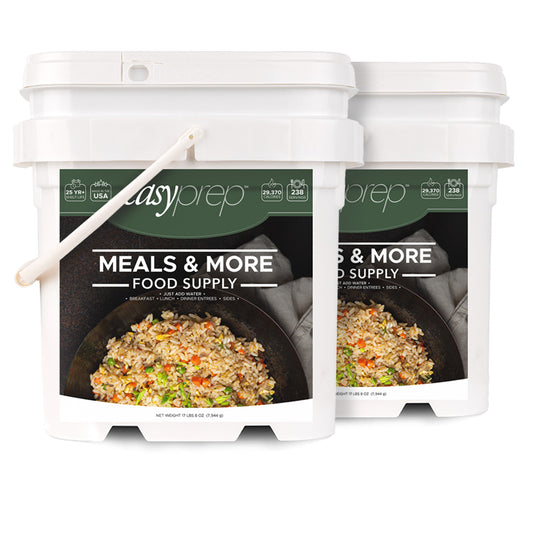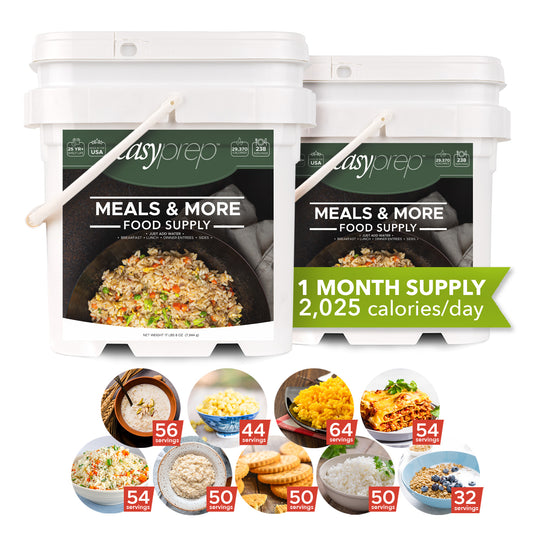How to Quilt a Queen Size Blanket by Hand
10 Mar 2016
Learning how to quilt by hand is a very valuable skill among people who homestead or live in rural areas. Not only will your newly hand sewn quilt keep you warm but it will also give you a fun, time-consuming project to work on. Some homesteaders who enjoy sewing will sell or trade their quilts for a little extra income or other supplies. If you haven’t ever touched a needle and thread, it will help if you practice a few basic stitches and knots. The great thing about sewing is if you make a mistake, you can easily correct it. Today, we will be giving you a step by step guide on how to quilt a queen size quilt by hand.
 9 Square Block[/caption]
5. Once you have cut enough squares, it is important to start laying out the squares in the formation that you want. Most quilters group them into a block (see picture above).
Here are a few examples:
9 Square Block[/caption]
5. Once you have cut enough squares, it is important to start laying out the squares in the formation that you want. Most quilters group them into a block (see picture above).
Here are a few examples:
 6. First, take your thread and measure around 48”. You’ll want to make a quilters knot before doing your first stitch.
Basic Quilter's Knot
6. First, take your thread and measure around 48”. You’ll want to make a quilters knot before doing your first stitch.
Basic Quilter's Knot
 7. Next, begin by hand sewing (using a running stitch) the squares into three rows, starting with the top row. It is important to leave a ¼ inch seam allowance. If it is easier for you to remember, use a pin to mark how far you should sew with each square. After you sew the three rows, make sure to sew them together. Make sure to use a quilters knot after you are finished with the block. Make a separate pile for completed blocks.
7. Next, begin by hand sewing (using a running stitch) the squares into three rows, starting with the top row. It is important to leave a ¼ inch seam allowance. If it is easier for you to remember, use a pin to mark how far you should sew with each square. After you sew the three rows, make sure to sew them together. Make sure to use a quilters knot after you are finished with the block. Make a separate pile for completed blocks.
 8. With an iron, flatten each blocks seam. This will make it easier in the future for you to sew adjoining pieces together. The easiest stitch to do is called a running stitch. This helps keep the fabric aligned.
Running Stitch
The needle should be inserted through the front of the fabric, catching small amounts of the back of the fabric, being reinserted through all layers again and again in a steady pattern. Make sure to use a thimble.
8. With an iron, flatten each blocks seam. This will make it easier in the future for you to sew adjoining pieces together. The easiest stitch to do is called a running stitch. This helps keep the fabric aligned.
Running Stitch
The needle should be inserted through the front of the fabric, catching small amounts of the back of the fabric, being reinserted through all layers again and again in a steady pattern. Make sure to use a thimble.
 9. Once you have hand sewn all of the quilt blocks, iron over them again to make sure they are flat.
10. When sewing each column, it is easier to start from the top and work your way down to the bottom.
9. Once you have hand sewn all of the quilt blocks, iron over them again to make sure they are flat.
10. When sewing each column, it is easier to start from the top and work your way down to the bottom.
 11. Start by laying column 1 right side up. Lay column 2 on top of it, right side down. Line everything up as best as you can before pinning.
12. Once you are finished sewing the columns together, make sure to iron your fabric, seams and backing.
13. Next, lay down the backing, batting and quilted blocks facing upwards. Smooth everything out as much as you can.
14. This next step is very important – make sure to pin all 3 layers of material within 3 – 6 inches of each other. You’ll notice that most quilters pin in the middle of squares. This will prevent bumps from showing up later on.
15. Most hand quilters find it very helpful to use a quilter's hoop or quilting frame when starting this part. It will keep the fabric tight while sewing each square. To save time, it is easier to sew in horizontal and vertical lines across the quilt instead of around each box. After you have finished hand stitching every block, cut off any excess threads and batting.
11. Start by laying column 1 right side up. Lay column 2 on top of it, right side down. Line everything up as best as you can before pinning.
12. Once you are finished sewing the columns together, make sure to iron your fabric, seams and backing.
13. Next, lay down the backing, batting and quilted blocks facing upwards. Smooth everything out as much as you can.
14. This next step is very important – make sure to pin all 3 layers of material within 3 – 6 inches of each other. You’ll notice that most quilters pin in the middle of squares. This will prevent bumps from showing up later on.
15. Most hand quilters find it very helpful to use a quilter's hoop or quilting frame when starting this part. It will keep the fabric tight while sewing each square. To save time, it is easier to sew in horizontal and vertical lines across the quilt instead of around each box. After you have finished hand stitching every block, cut off any excess threads and batting.
 16. Next, we will need to bind the outside of the quilt together. The most cost effective way to do this is to use fabric from the backing. If you would like to save some time, purchase double fold bias tape. The easiest way to make your own binding is to cut 4 - 3 ¾ wide inch strips. Remember, you’ll need 33 feet or 11 yards of binding tape to go around the entire quilt. Make sure to cut the edges and to make them straight.
16. Next, we will need to bind the outside of the quilt together. The most cost effective way to do this is to use fabric from the backing. If you would like to save some time, purchase double fold bias tape. The easiest way to make your own binding is to cut 4 - 3 ¾ wide inch strips. Remember, you’ll need 33 feet or 11 yards of binding tape to go around the entire quilt. Make sure to cut the edges and to make them straight.
 17. Take two strips; lay one horizontal, then lay the other one on top vertically as seen in the picture above.
17. Take two strips; lay one horizontal, then lay the other one on top vertically as seen in the picture above.
 18. Where the two strips cross over, pin and sew tightly together on the diagonal line. Make sure to cut the excess material off and iron the seam. Repeat this step with the other two strips.
18. Where the two strips cross over, pin and sew tightly together on the diagonal line. Make sure to cut the excess material off and iron the seam. Repeat this step with the other two strips.
 19. Now, take your bias tape maker and feed your long strip of fabric wrong side up (that way you can see the bottom the seams) and push it through the slot in the middle. It is important that the seams feed through as flat as possible. Iron over all of the creases made by the bias tape maker.
19. Now, take your bias tape maker and feed your long strip of fabric wrong side up (that way you can see the bottom the seams) and push it through the slot in the middle. It is important that the seams feed through as flat as possible. Iron over all of the creases made by the bias tape maker.
 20. Face your quilt towards the floor, with your long strip of binding tape, pin to all 3 layers as shown in the picture. We recommend pinning every 6 inches. Around the corners, it is important to fold bias tape so that the raw edge is not on the outside.
20. Face your quilt towards the floor, with your long strip of binding tape, pin to all 3 layers as shown in the picture. We recommend pinning every 6 inches. Around the corners, it is important to fold bias tape so that the raw edge is not on the outside.
 21. At the corner, extend the bias tape over the opposite edge. Then, fold it back so that it forms a triangle and goes to the left the original pinned strip. Now, fold the strip back over the triangle so that the folded edge lines up with the raw edge and the strip can now continue down the shorter side of the quilt! (If you've done this correctly, you'll have a little triangle fold as shown in the last photo.
22. Next, sew the back side of the quilt leaving ¼ inch allowance. Take out the pins as you stitch past them.
21. At the corner, extend the bias tape over the opposite edge. Then, fold it back so that it forms a triangle and goes to the left the original pinned strip. Now, fold the strip back over the triangle so that the folded edge lines up with the raw edge and the strip can now continue down the shorter side of the quilt! (If you've done this correctly, you'll have a little triangle fold as shown in the last photo.
22. Next, sew the back side of the quilt leaving ¼ inch allowance. Take out the pins as you stitch past them. 23. Fold over the remaining bias tape to the front and pin the quilt like you did with the back.
24. Last step! Just like the backside, leave a ¼ inch seam allowance while hand sewing the top of your quilt!
23. Fold over the remaining bias tape to the front and pin the quilt like you did with the back.
24. Last step! Just like the backside, leave a ¼ inch seam allowance while hand sewing the top of your quilt!
 Pictures and references credit to: https://www.instructables.com/id/How-to-sew-a-quilt-Quilting-101/?ALLSTEPS
Other References:
https://www.craftsy.com/blog/2014/10/hand-quilting-stitches/
https://www.sewmamasew.com/2010/05/learn-how-to-hand-quilt/
https://www.allpeoplequilt.com/how-to-quilt/hand-quilting/hand-quilting-basics?page=0%2C1
https://www.allpeoplequilt.com/how-to-quilt/embellishing/basic-hand-embroidery-stitches?page=13
https://www.allpeoplequilt.com/how-to-quilt/embellishing/basic-hand-embroidery-stitches?page=4
Pictures and references credit to: https://www.instructables.com/id/How-to-sew-a-quilt-Quilting-101/?ALLSTEPS
Other References:
https://www.craftsy.com/blog/2014/10/hand-quilting-stitches/
https://www.sewmamasew.com/2010/05/learn-how-to-hand-quilt/
https://www.allpeoplequilt.com/how-to-quilt/hand-quilting/hand-quilting-basics?page=0%2C1
https://www.allpeoplequilt.com/how-to-quilt/embellishing/basic-hand-embroidery-stitches?page=13
https://www.allpeoplequilt.com/how-to-quilt/embellishing/basic-hand-embroidery-stitches?page=4
Supplies You’ll Need for Your Queen Size Quilt
- Size 10 Quilting Needle
- Fingertip Thimble
- Cotton Thread
- Quilting Scissors
- Painters Tape (optional)
- Mechanical Fabric Pencil (vanishing ink or chalk markers will work too)
- Quilters hoop or Quilting Frame
- Fabric
- Batting – Queen Size (90” x 108” or 10 square yards)
- Backing – 90” x 108”
- Double Fold Bias Tape (optional but you’ll still need fabric to bind the quilt) 33 feet or 11 yards
- Bias Tape Maker
Important Quilting Definitions
Backing: the fabric forming the back of a quilt Batting: the “fluff” or “loft” between the quilt and backing that adds insulation and warmth. You can choose between cotton, polyester or wool. Bias Tape: strips of fabric used to bind the edges of the quilt. You can purchase already made bias tape online or you can make your own with extra backing fabric. Blocks: a basic unit of quilt construction; usually in the form of a square of pieced fabric. In this case, it is 3 x 3 fabric squares. Each square is cut at 4 ¼” X 4 ¼” (4”x4” when sewn). Loft: Picking the right “fluff” is very important. When shopping for batting, you can buy it already sized for cribs, twin, full, queen and king size quilts. You can also buy it at a custom size. "Low Loft Batting" is great for flatter quilts while "High Loft Batting" is preferred for heavier, fluffier quilts. Seam: a line along which two pieces of fabric are sewn together in a garment or other article.Step by Step Guide on How to Make Your Queen Size Quilt:
1. Choose a place in your home with a big table that gives you enough space to put all of your quilting materials in one area. 2. Choose Fabric – most quilters will recommend that you use 100% cotton as well as 2 – 8 different fabric designs. 3. Launder and iron fabrics – before cutting out the squares, it is important to run the material through the laundry. This will allow the fabric to shrink before sizing your quilt. If it is wrinkled, make sure to iron the fabric before cutting or sewing pieces together. 4. Measure and cut square pieces 4 ¼” x 4 ¼“ – the design we are showing you today is called a “9 Square Quilt”. Even with this simple design, you can create a beautiful quilt with different colors and patterns. [caption id="attachment_12189" align="aligncenter" width="450"] 9 Square Block[/caption]
5. Once you have cut enough squares, it is important to start laying out the squares in the formation that you want. Most quilters group them into a block (see picture above).
Here are a few examples:
9 Square Block[/caption]
5. Once you have cut enough squares, it is important to start laying out the squares in the formation that you want. Most quilters group them into a block (see picture above).
Here are a few examples:
- 2 contrasting solids
- 1 Solid 1 Pattern block
- 1 pattern and 1 solid that matches one of the colors in the pattern
- Two distinct pattern (dots & stripes, two dots of different colors, etc.)
 6. First, take your thread and measure around 48”. You’ll want to make a quilters knot before doing your first stitch.
Basic Quilter's Knot
6. First, take your thread and measure around 48”. You’ll want to make a quilters knot before doing your first stitch.
Basic Quilter's Knot
- With your needle threaded, hold the thread tail over the needle, extending it about ½” above
- Holding the thread tail against the needle, with one hand, use your other hand to wrap the thread around the needle clockwise two or three times.
- Pinching the thread tail and wraps with your thumb and forefinger, grasp the needle near the point and gently pull it through the thread wraps.
- Continue pinching the thread wraps until the thread is pulled completely through and forms a small, firm knot near the end of the thread tail.
 7. Next, begin by hand sewing (using a running stitch) the squares into three rows, starting with the top row. It is important to leave a ¼ inch seam allowance. If it is easier for you to remember, use a pin to mark how far you should sew with each square. After you sew the three rows, make sure to sew them together. Make sure to use a quilters knot after you are finished with the block. Make a separate pile for completed blocks.
7. Next, begin by hand sewing (using a running stitch) the squares into three rows, starting with the top row. It is important to leave a ¼ inch seam allowance. If it is easier for you to remember, use a pin to mark how far you should sew with each square. After you sew the three rows, make sure to sew them together. Make sure to use a quilters knot after you are finished with the block. Make a separate pile for completed blocks.
 8. With an iron, flatten each blocks seam. This will make it easier in the future for you to sew adjoining pieces together. The easiest stitch to do is called a running stitch. This helps keep the fabric aligned.
Running Stitch
The needle should be inserted through the front of the fabric, catching small amounts of the back of the fabric, being reinserted through all layers again and again in a steady pattern. Make sure to use a thimble.
8. With an iron, flatten each blocks seam. This will make it easier in the future for you to sew adjoining pieces together. The easiest stitch to do is called a running stitch. This helps keep the fabric aligned.
Running Stitch
The needle should be inserted through the front of the fabric, catching small amounts of the back of the fabric, being reinserted through all layers again and again in a steady pattern. Make sure to use a thimble.
 9. Once you have hand sewn all of the quilt blocks, iron over them again to make sure they are flat.
10. When sewing each column, it is easier to start from the top and work your way down to the bottom.
9. Once you have hand sewn all of the quilt blocks, iron over them again to make sure they are flat.
10. When sewing each column, it is easier to start from the top and work your way down to the bottom.
 11. Start by laying column 1 right side up. Lay column 2 on top of it, right side down. Line everything up as best as you can before pinning.
12. Once you are finished sewing the columns together, make sure to iron your fabric, seams and backing.
13. Next, lay down the backing, batting and quilted blocks facing upwards. Smooth everything out as much as you can.
14. This next step is very important – make sure to pin all 3 layers of material within 3 – 6 inches of each other. You’ll notice that most quilters pin in the middle of squares. This will prevent bumps from showing up later on.
15. Most hand quilters find it very helpful to use a quilter's hoop or quilting frame when starting this part. It will keep the fabric tight while sewing each square. To save time, it is easier to sew in horizontal and vertical lines across the quilt instead of around each box. After you have finished hand stitching every block, cut off any excess threads and batting.
11. Start by laying column 1 right side up. Lay column 2 on top of it, right side down. Line everything up as best as you can before pinning.
12. Once you are finished sewing the columns together, make sure to iron your fabric, seams and backing.
13. Next, lay down the backing, batting and quilted blocks facing upwards. Smooth everything out as much as you can.
14. This next step is very important – make sure to pin all 3 layers of material within 3 – 6 inches of each other. You’ll notice that most quilters pin in the middle of squares. This will prevent bumps from showing up later on.
15. Most hand quilters find it very helpful to use a quilter's hoop or quilting frame when starting this part. It will keep the fabric tight while sewing each square. To save time, it is easier to sew in horizontal and vertical lines across the quilt instead of around each box. After you have finished hand stitching every block, cut off any excess threads and batting.
 16. Next, we will need to bind the outside of the quilt together. The most cost effective way to do this is to use fabric from the backing. If you would like to save some time, purchase double fold bias tape. The easiest way to make your own binding is to cut 4 - 3 ¾ wide inch strips. Remember, you’ll need 33 feet or 11 yards of binding tape to go around the entire quilt. Make sure to cut the edges and to make them straight.
16. Next, we will need to bind the outside of the quilt together. The most cost effective way to do this is to use fabric from the backing. If you would like to save some time, purchase double fold bias tape. The easiest way to make your own binding is to cut 4 - 3 ¾ wide inch strips. Remember, you’ll need 33 feet or 11 yards of binding tape to go around the entire quilt. Make sure to cut the edges and to make them straight.
 17. Take two strips; lay one horizontal, then lay the other one on top vertically as seen in the picture above.
17. Take two strips; lay one horizontal, then lay the other one on top vertically as seen in the picture above.
 18. Where the two strips cross over, pin and sew tightly together on the diagonal line. Make sure to cut the excess material off and iron the seam. Repeat this step with the other two strips.
18. Where the two strips cross over, pin and sew tightly together on the diagonal line. Make sure to cut the excess material off and iron the seam. Repeat this step with the other two strips.
 19. Now, take your bias tape maker and feed your long strip of fabric wrong side up (that way you can see the bottom the seams) and push it through the slot in the middle. It is important that the seams feed through as flat as possible. Iron over all of the creases made by the bias tape maker.
19. Now, take your bias tape maker and feed your long strip of fabric wrong side up (that way you can see the bottom the seams) and push it through the slot in the middle. It is important that the seams feed through as flat as possible. Iron over all of the creases made by the bias tape maker.
 20. Face your quilt towards the floor, with your long strip of binding tape, pin to all 3 layers as shown in the picture. We recommend pinning every 6 inches. Around the corners, it is important to fold bias tape so that the raw edge is not on the outside.
20. Face your quilt towards the floor, with your long strip of binding tape, pin to all 3 layers as shown in the picture. We recommend pinning every 6 inches. Around the corners, it is important to fold bias tape so that the raw edge is not on the outside.
 21. At the corner, extend the bias tape over the opposite edge. Then, fold it back so that it forms a triangle and goes to the left the original pinned strip. Now, fold the strip back over the triangle so that the folded edge lines up with the raw edge and the strip can now continue down the shorter side of the quilt! (If you've done this correctly, you'll have a little triangle fold as shown in the last photo.
22. Next, sew the back side of the quilt leaving ¼ inch allowance. Take out the pins as you stitch past them.
21. At the corner, extend the bias tape over the opposite edge. Then, fold it back so that it forms a triangle and goes to the left the original pinned strip. Now, fold the strip back over the triangle so that the folded edge lines up with the raw edge and the strip can now continue down the shorter side of the quilt! (If you've done this correctly, you'll have a little triangle fold as shown in the last photo.
22. Next, sew the back side of the quilt leaving ¼ inch allowance. Take out the pins as you stitch past them. 23. Fold over the remaining bias tape to the front and pin the quilt like you did with the back.
24. Last step! Just like the backside, leave a ¼ inch seam allowance while hand sewing the top of your quilt!
23. Fold over the remaining bias tape to the front and pin the quilt like you did with the back.
24. Last step! Just like the backside, leave a ¼ inch seam allowance while hand sewing the top of your quilt!
 Pictures and references credit to: https://www.instructables.com/id/How-to-sew-a-quilt-Quilting-101/?ALLSTEPS
Other References:
https://www.craftsy.com/blog/2014/10/hand-quilting-stitches/
https://www.sewmamasew.com/2010/05/learn-how-to-hand-quilt/
https://www.allpeoplequilt.com/how-to-quilt/hand-quilting/hand-quilting-basics?page=0%2C1
https://www.allpeoplequilt.com/how-to-quilt/embellishing/basic-hand-embroidery-stitches?page=13
https://www.allpeoplequilt.com/how-to-quilt/embellishing/basic-hand-embroidery-stitches?page=4
Pictures and references credit to: https://www.instructables.com/id/How-to-sew-a-quilt-Quilting-101/?ALLSTEPS
Other References:
https://www.craftsy.com/blog/2014/10/hand-quilting-stitches/
https://www.sewmamasew.com/2010/05/learn-how-to-hand-quilt/
https://www.allpeoplequilt.com/how-to-quilt/hand-quilting/hand-quilting-basics?page=0%2C1
https://www.allpeoplequilt.com/how-to-quilt/embellishing/basic-hand-embroidery-stitches?page=13
https://www.allpeoplequilt.com/how-to-quilt/embellishing/basic-hand-embroidery-stitches?page=4


